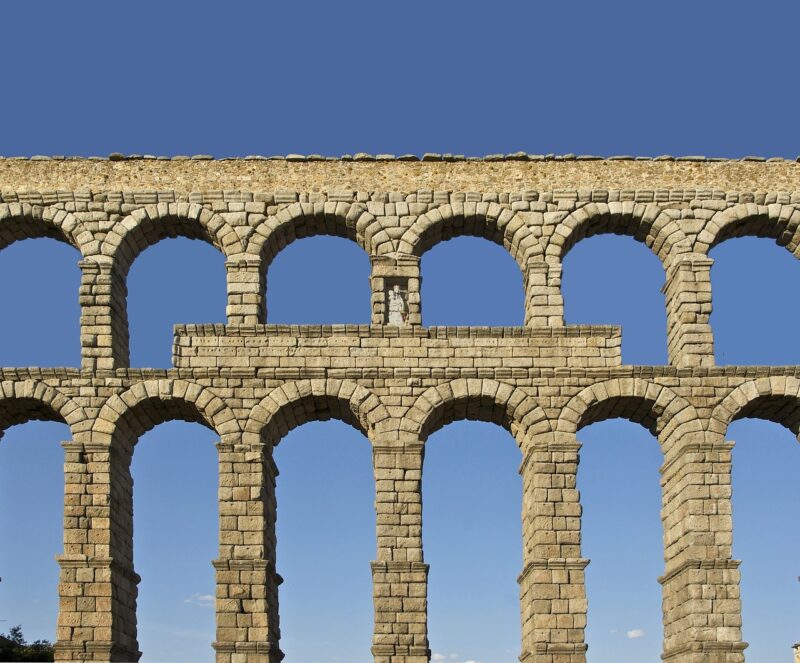How Ancient Civilizations Built Water Systems That Still Function and Amaze Engineers Today
November 17, 2024

Water is essential for life, and throughout history, civilizations have demonstrated remarkable ingenuity in their quest to harness and manage this vital resource. From the intricate aqueducts of the Romans to the advanced hydraulic systems of the Maya, ancient societies laid the groundwork for modern engineering marvels with their water systems. In this article, we will explore how these ancient civilizations designed and constructed water systems that continue to inspire and function today.
1. The Importance of Water in Ancient Civilizations
Water management has always been a critical concern for any civilization. The availability and distribution of water directly influenced agricultural productivity, health outcomes, and urban development. Recognizing the importance of reliable water sources, ancient civilizations devised systems that ensured a consistent supply of fresh water, leading to flourishing communities and advanced societies.
2. Roman Aqueducts: Engineering Marvels of the Ancient World
One of the most significant feats of engineering in ancient Rome was the aqueduct system. These structures were built to transport water from distant sources to cities, enabling sustained urban living. The Romans constructed over 400 aqueducts, some spanning incredible distances, and many were designed to maintain a steady gradient to facilitate the flow of water.
**Features of Roman Aqueducts:**
- Arch Structures: The Romans perfected the arch design, allowing aqueducts to traverse rough terrains. These arches not only supported the aqueducts but also minimized construction material while maximizing stability.
- Gravity Flow: The aqueduct system relied on gravitational flow, requiring precise calculations to maintain desired gradients. Water was channeled into troughs, which allowed it to flow naturally to its destination.
- Stone Workmanship: Roman engineers were adept at using local stone, creating sturdy structures that have stood the test of time. The use of concrete further enhanced the durability of aqueducts.
Many of these aqueducts are still operational, demonstrating the impressive engineering skills of the Romans. The Aqua Appia and Aqua Claudia are notable examples still in use, supplying water to modern-day Rome.
3. The Maya: A Model of Sustainable Water Management
The ancient Maya civilization developed complex water management systems that adapted to their tropical environment. Unlike the Romans, who primarily relied on gravity-based designs, the Maya innovated with cisterns and reservoirs, addressing the issue of seasonal rainfall fluctuations.
**Mayan Water Systems Features:**
- Cisterns and Reservoirs: The Maya constructed large underground cisterns to capture and store rainwater. These reservoirs helped ensure a year-round water supply in areas prone to drought.
- Agricultural Canals: The Maya dug canals to direct water to crops, optimizing irrigation techniques. These systems offered efficient water distribution during the growing season.
- Rainwater Harvesting: The Maya were masters of rainwater harvesting, creating systems that effectively channeled rain into their cisterns. The design minimized evaporation and maximized the efficiency of water capture.
Many of these systems laid the groundwork for sustainable agriculture and water management practices that are still studied and applied in water-scarce regions today.
4. Persian Qanats: Ingenious Subterranean Aqueducts
The Qanat system of the Persian Empire demonstrates an innovative solution to the challenges of arid landscapes. A qanat is a gently sloping underground tunnel used to transport water from an aquifer to the surface. The design of qanats showcases the exceptional engineering capabilities of ancient Persians.
**Characteristics of Qanats:**
- Gravity-Based System: Like Roman aqueducts, qanats utilized gravity to efficiently transport water. The gentle slope of the tunnels minimized the energy required for water movement.
- Cooling Effect: The underground structure of qanats kept the water cooler and reduced evaporation losses, making water more accessible even in hot climates.
- Sustainable Water Source: The qanat systems provided a reliable water supply for agriculture and settlements, allowing communities to thrive in arid regions.
Today, qanats still operate effectively in modern Iran and parts of the Middle East, showcasing a legacy of sustainability that has endured for centuries.
5. Modern Applications of Ancient Water Engineering
The water systems devised by ancient civilizations have not only influenced historical infrastructure but also provide insights into modern water management techniques. Today, engineers and city planners look to these innovations for solutions to current water challenges:
**Key Takeaways for Modern Engineers:**
- Sustainability: The principles of sustainable water management exemplified by the Maya can inform modern conservation efforts and policies aimed at reducing water waste and improving efficiency.
- Gravity and Efficiency: The use of gravity in Roman aqueducts continues to inspire contemporary designs, prioritizing the use of gravity-fed water systems to reduce energy costs.
- Diverse Solutions for Diverse Environments: The varied approaches to water management used by different civilizations demonstrate that there isn’t a one-size-fits-all solution; local conditions shape the infrastructure needed to manage water resources effectively.
Addressing modern water scarcity, pollution, and management challenges requires a multidisciplinary approach that draws from the lessons of the past.
Conclusion
The water systems designed by ancient civilizations represent a remarkable blend of artistry, engineering, and sustainable resource management. Their functional designs continue to serve communities across the globe and inspire engineers seeking solutions to contemporary water challenges. By studying these ancient practices, we can glean invaluable insights that help us develop resilient water systems for future generations. Understanding our history not only honors the achievements of our ancestors but also guides us in preserving the earth’s most precious resources, ensuring access to clean water for all.
As we explore the legacies of these ancient water engineers, we recognize that their innovations serve as both solutions to past problems and guiding principles for future technologies and methodologies.








